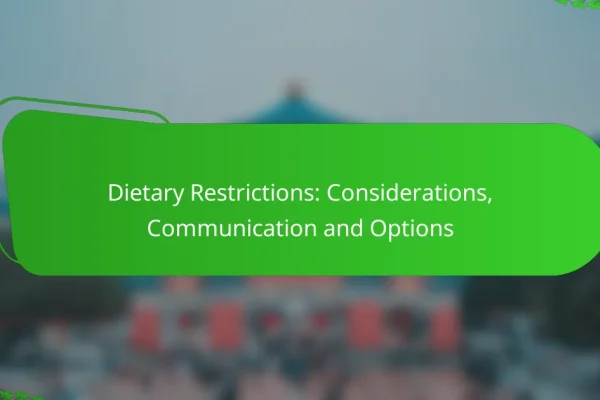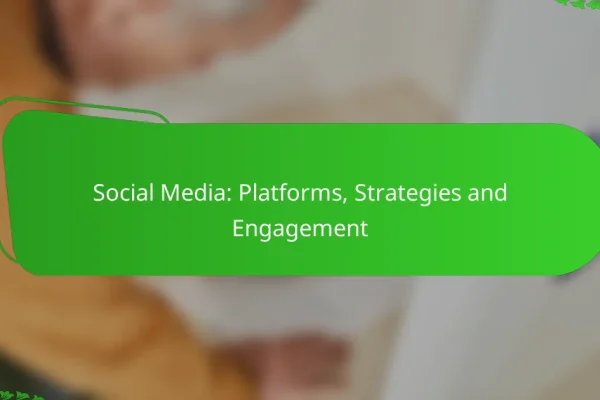What are the best invitation platforms for events?
The best invitation platforms for events streamline the process of sending invites and managing guest lists. They offer various features such as RSVP tracking, customizable designs, and integration with calendars, making it easier to organize gatherings of any size.
Evite
Evite is a popular online invitation service that allows users to create and send digital invitations for free. It offers a range of templates suitable for various occasions, from casual gatherings to formal events.
One key feature is the RSVP tracking, which helps hosts monitor guest responses easily. However, some advanced features may require a paid subscription, so consider your needs before choosing a plan.
Paperless Post
Paperless Post combines stylish design with functionality, offering beautifully crafted digital invitations. Users can customize their invites with various themes and personal touches, making it ideal for weddings and upscale events.
While many designs are free, premium options come at a cost, typically ranging from a few dollars to around ten dollars per invitation. This platform also provides RSVP management, ensuring hosts stay organized.
Eventbrite
Eventbrite is primarily known for ticketing and event management but also offers invitation features. It is particularly effective for larger events, such as conferences or concerts, where ticket sales are involved.
Hosts can create events, manage registrations, and track attendance all in one place. Eventbrite charges fees based on ticket sales, so factor this into your budget when planning your event.
Greenvelope
Greenvelope focuses on eco-friendly digital invitations, providing a sophisticated alternative to traditional paper invites. It features elegant designs and allows for easy RSVP tracking.
While Greenvelope requires a subscription for full access, its commitment to sustainability may appeal to environmentally conscious hosts. Pricing starts at a modest monthly fee, making it a viable option for regular event planners.
Facebook Events
Facebook Events is a free tool that allows users to create and manage events directly on the platform. It is particularly useful for casual gatherings and community events, as it leverages existing social networks for easy sharing.
Hosts can invite friends, track RSVPs, and post updates. However, the visibility of your event may depend on privacy settings and the engagement of your network, so consider this when planning your outreach strategy.
How to manage guest lists effectively?
Managing guest lists effectively involves organizing and tracking attendees to ensure a smooth event experience. Key strategies include utilizing RSVP tools, tracking attendance, and segmenting guests based on their relationships or roles.
Using RSVP tools
RSVP tools simplify the process of collecting responses from guests. These digital platforms allow you to send invitations and receive confirmations in real-time, reducing the chances of miscommunication.
Popular options include platforms like Eventbrite, Paperless Post, and Google Forms. Choose a tool that fits your event size and budget, as some offer free basic services while others may charge for advanced features.
Tracking attendance
Tracking attendance helps you understand who is coming and who is not, allowing for better planning. Use check-in apps or spreadsheets to monitor arrivals and manage seating arrangements efficiently.
Consider sending reminders a few days before the event to encourage attendance. This can increase your final headcount by a small percentage, which is crucial for catering and venue arrangements.
Segmenting guests
Segmenting guests involves categorizing them based on criteria like family, friends, or business associates. This helps tailor your communication and event experience to different groups.
For instance, you might want to send personalized messages or create specific seating arrangements. Use tags in your RSVP tool to easily manage these segments and ensure everyone feels included.
What are the key features of guest management software?
Guest management software typically includes features that streamline the invitation process, enhance communication with attendees, and simplify check-in procedures. These tools are designed to improve the overall experience for both hosts and guests, ensuring efficient event management.
Automated RSVPs
Automated RSVP systems allow hosts to send invitations and receive responses without manual tracking. Guests can easily confirm their attendance through online forms or links, reducing the chances of miscommunication.
Consider using software that integrates with calendar applications, allowing guests to add events directly to their schedules. This feature can increase attendance rates and provide a seamless experience for everyone involved.
Guest communication
Effective guest communication tools enable hosts to send updates, reminders, and important information to attendees. These systems often include email and SMS notifications, ensuring that guests are well-informed before the event.
Utilizing a centralized platform for communication can help avoid confusion and keep all parties on the same page. Look for features that allow for personalized messages or group notifications to enhance engagement.
Check-in solutions
Check-in solutions streamline the arrival process for events, allowing hosts to track guest attendance efficiently. Many software options offer mobile check-in capabilities, enabling guests to check in using their smartphones.
Consider implementing QR code scanning for quick and easy check-ins. This method can significantly reduce wait times and improve the overall guest experience, making events more enjoyable and organized.
How to choose the right invitation style for your event?
Selecting the right invitation style for your event involves considering the formality, medium, and theme of the occasion. Your choice should reflect the event’s tone and audience, ensuring that it resonates with your guests while providing essential details clearly.
Formal vs. informal
When deciding between formal and informal invitations, consider the nature of your event. Formal events, such as weddings or corporate gatherings, typically require elegant designs and traditional wording, while informal events like birthday parties or casual get-togethers can embrace a more relaxed style.
Formal invitations often use classic fonts and sophisticated colors, while informal ones can include playful graphics and vibrant hues. Ensure that the invitation style aligns with the expectations of your guests to set the right tone from the outset.
Digital vs. printed
Choosing between digital and printed invitations depends on your budget, timeline, and guest preferences. Digital invitations are cost-effective and can be sent quickly, making them ideal for last-minute events or casual gatherings. However, printed invitations offer a tangible keepsake that many guests appreciate, especially for significant occasions.
Consider the environmental impact as well; digital options reduce paper waste, while printed invitations can be more memorable. Evaluate your audience’s comfort with technology and their likely response to each format before making a decision.
Theme alignment
Your invitation style should align with the overall theme of your event to create a cohesive experience. Whether it’s a rustic wedding, a modern corporate event, or a whimsical birthday party, the invitation should reflect the theme through color schemes, fonts, and imagery.
For instance, a beach-themed party might feature tropical colors and casual fonts, while a black-tie gala would benefit from elegant typography and a sophisticated palette. Ensure that the invitation not only conveys the necessary details but also excites guests about the theme and atmosphere of the event.
What are the costs associated with invitation services?
The costs associated with invitation services can vary widely based on the type of service, features offered, and scale of the event. Generally, expenses may include design, printing, mailing, and digital platform fees, which can range from a few dollars to several hundred dollars depending on the complexity and volume of invitations.
Types of invitation services
Invitation services can be categorized into traditional and digital formats. Traditional services involve printed invitations, which may include costs for design, printing, and postage. Digital services, on the other hand, often charge a flat fee or a subscription for access to design tools and distribution platforms.
Factors influencing costs
Several factors can influence the costs of invitation services. The choice between custom designs and templates, the number of invitations needed, and additional features like RSVP tracking or guest management can all impact the final price. For example, custom designs typically cost more than using pre-made templates.
Budgeting for invitations
When budgeting for invitations, consider both fixed and variable costs. Fixed costs may include design fees, while variable costs can arise from the number of invitations printed or mailed. A practical approach is to allocate a specific percentage of your overall event budget to invitations, often around 5-10% for smaller events.
Common pitfalls to avoid
One common pitfall is underestimating the total costs by focusing only on printing and mailing. Be sure to account for design, any additional features, and unexpected expenses. Another mistake is not allowing enough time for the entire process, which can lead to rushed decisions and higher costs.












